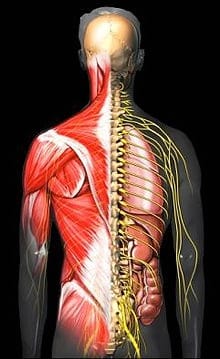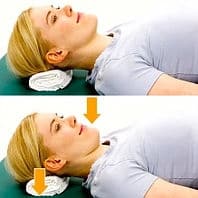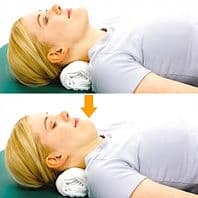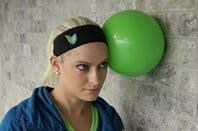Welcome to part 3/5 of our whiplash series. Last time we focused on familiarizing ourselves with the what medical procedures may take place. This time we will focus what to expect with Physical Therapy.
What to expect with physical therapy?
There have been numerous studies to determine the effectiveness of physical therapy for whiplash. There are some studies that say it helps while other research says it does not. One study suggests that this is not because physical therapy cannot be effective, but because current practices to treat whiplash are not as good as they could be. Many treatment strategies tried in former research studies focus on strength, flexibility, joint mobility, traction, modalities, etc., but have very few sensorimotor components. We’ll break it down in plain English why you need the right physical therapy for whiplash.
https://s-media-cache-ak0.pinimg.com
There are receptors in your muscles and ligaments that send and receive information to your brain, telling it if they are tight or loose. If you tilt your head to the left, you feel tightness on the right. You do the same with your eyes closed, and even though your eyes are closed, you know where your head is in relation to your body. Knowing where your limbs are in space without having to look is called proprioception (training proprioception is part of sensorimotor rehabilitation). Now imagine this same muscle gets torn, and all of the little guys who relay information to the brain get damaged. The muscle will tighten up to try to mend and heal itself. Meanwhile, while it heals in a tightened position, the receptors are getting used to this new “normal” tightness and your brain adapts to the new tightness as well. This causes a problem when one side of your neck is saying it’s too tight, but the other side says it’s normal. The brain does not know what to do! So any movement afterwards is confused and ends up with some muscles working too hard, and some restricting the movement. Ever tried to pick something up that you thought was way heavier and stumbled back when it was light? Same thing can happen to your muscles at a smaller level.
Now to address the question of the section: What to expect in physical therapy? It is in my opinion, due to my past patient experiences and successes, that you need a strengthening and proprioceptive training protocol. In the acute and subacute phases of whiplash recovery I believe that restoring proprioceptive control will lead to a resolution of the range of motion restrictions and ultimately allow for a complete recovery. I do not employ stretching, due to the fact that it is a stretch that caused the injury in the first place, and the tightening is likely not due to a shortened muscle, but a contracted one.
Manual intervention (hands-on therapy) may consist of trigger point or any myofascial release (massage) techniques that will facilitate muscular relaxation and restoration of appropriate pressure receptor information. Your therapist may also speak to you about restoring your joint mobility if it has been affected by the increased muscular compression.
I have outlined below a few isometric (meaning non-moving) strengthening exercises that you may receive in PT. Before beginning any type of exercise program consult your PT or primary care to determine if you are appropriate for initiation of exercises. You will likely require more dynamic exercises beyond this point, but they can be complex and need to be performed correctly under supervision. I recommend seeking out a physical therapist that is familiar with neck proprioception exercises as this is the most important piece of your rehabilitation. Here is a youtube link to an exercise very similar to one I use in clinic. In the next discussions we will talk about what to do in the case of chronic whiplash, and how to optimize your vehicle seating to lower your chances of getting whiplash if rear-ended.
Chin tucks: Performed for 10-15 seconds at a time. Focus on drawing your chin towards the center of your throat.
hep2go.com
Cervical Extension with cue. Performed for 10-15 seconds at a time, focus on pushing directly into the towel.
hep2go.com
Isometric ball on wall exercises: Performed lightly for 10-15 second holds. It is important to make sure your neck is neutral and not bent to either side.
hep2go.com
1. Karlsson A, OD L, Aslund U, et al. An Investigation of Fat Infiltration of the Multifidus Muscle in Patients With Severe Neck Symptoms Associated With Chronic Whiplash-Associated Disorder. J Orthop Sports Phys Ther. 46(10):886-893.
2. Lamb S, Williams M, Williamson E, et al. Managing Injuries of the Neck Trial (MINT): a radomised controlled trial of treatments for whiplash injuries. Health Technol Assess (Rockv). 2012;16(49).
3. Kristjansson E, Treleaven J. Sensorimotor function and dizziness in neck pain: implications for assessment and management. J Orthop Sports Phys Ther. 2009;39(5):364-377. doi:10.2519/jospt.2009.2834.





